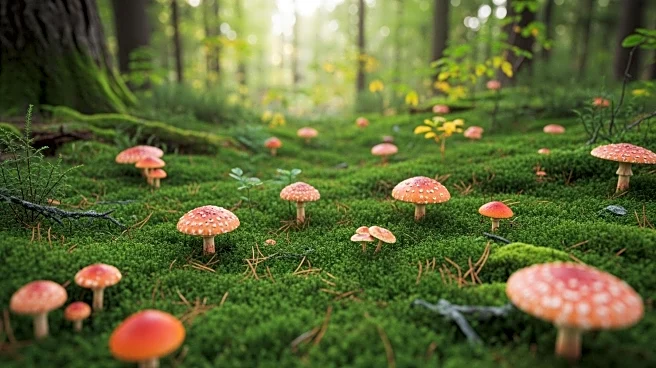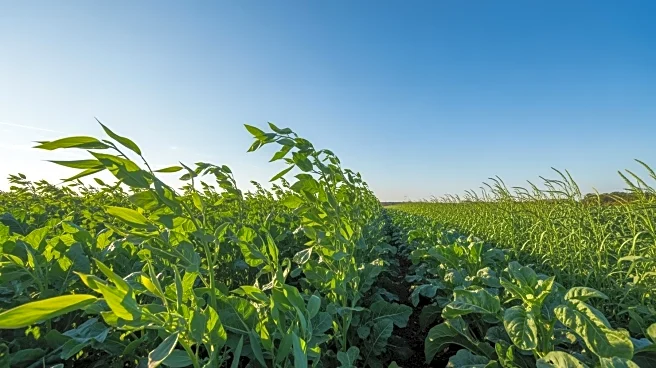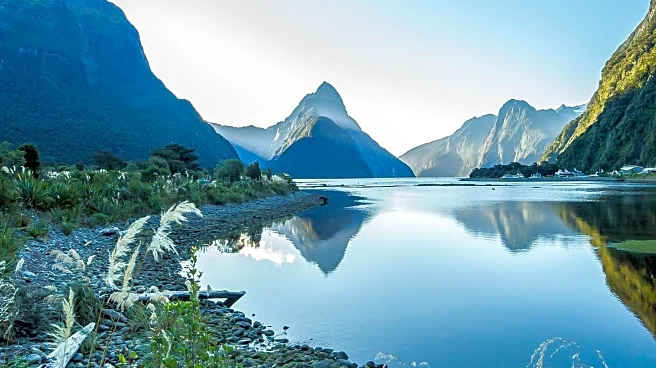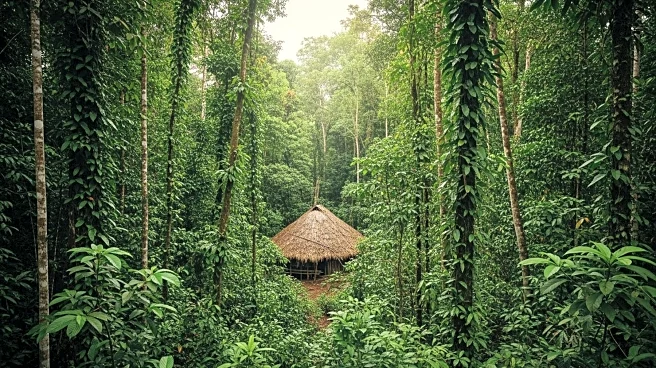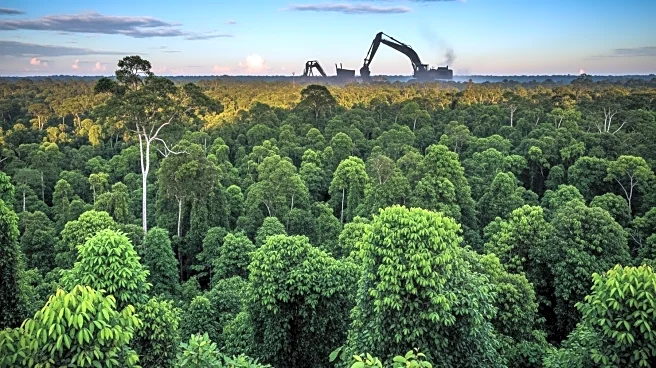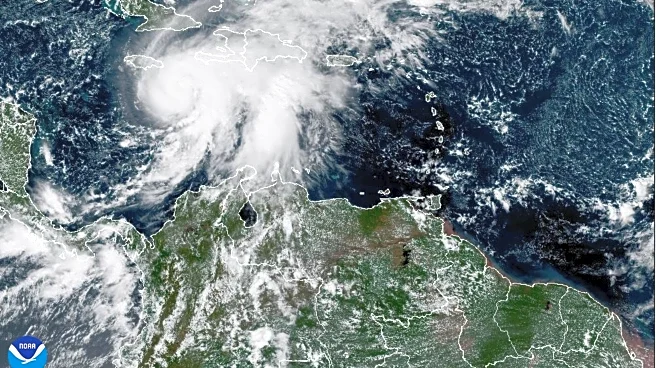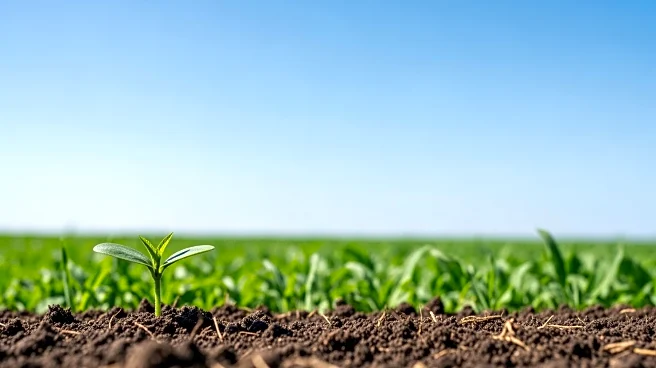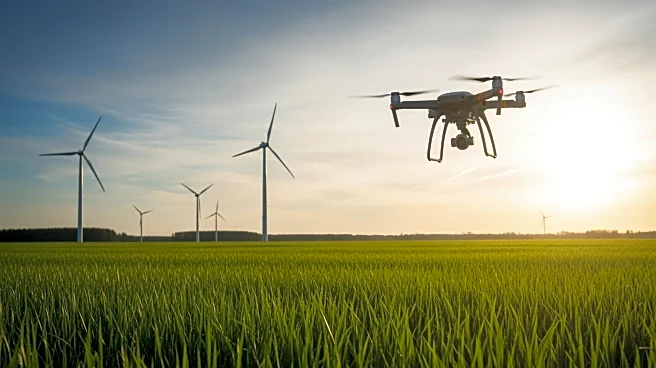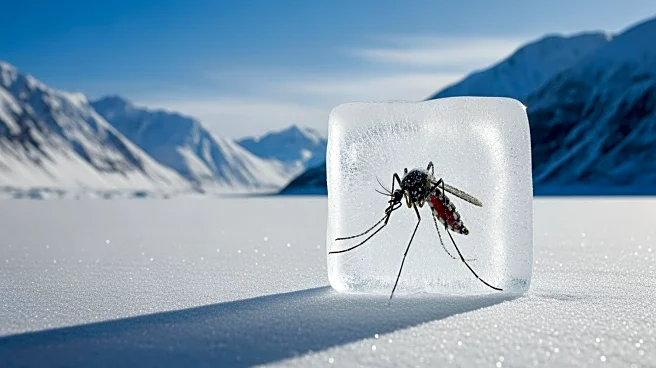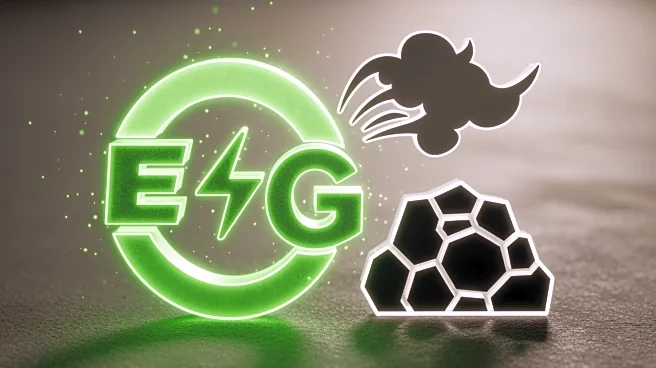What's Happening?
A new collection across npj Biodiversity, Nature Ecology & Evolution, and Scientific Reports is focusing on the biodiversity and ecosystem functioning of global peatlands. These ecosystems, ranging from
boreal Sphagnum bogs to tropical peat swamp forests, are characterized by harsh environmental conditions such as acidic, nutrient-poor waters. Peatlands play a crucial role in sequestering carbon, with some peat layers reaching depths of up to 190 meters. The collection aims to amplify research related to Sustainable Development Goals (SDG) 13, 14, and 15, emphasizing the unique biodiversity and ecological adaptations found in these environments. Despite their importance, peatlands are under threat from human activities like drainage, clearing, and climate change.
Why It's Important?
Peatlands are vital for global carbon storage, holding approximately one-third of the planet's soil carbon. Their degradation poses significant risks to climate stability, as disturbed peatlands can release stored carbon, contributing to greenhouse gas emissions. The collection's focus on biodiversity and ecosystem functioning is crucial for understanding how these ecosystems can be preserved and restored. By highlighting the unique adaptations of flora and fauna in peatlands, the research can inform conservation strategies and policy decisions aimed at protecting these critical environments. The collection also underscores the need for increased attention to the biodiversity of peatlands, which has historically been overshadowed by studies on carbon dynamics.
What's Next?
The collection invites submissions from researchers worldwide, encouraging a collaborative approach to understanding peatland ecosystems. Future research may focus on developing innovative conservation techniques and exploring the socio-economic impacts of peatland degradation. Policymakers and environmental organizations could leverage the findings to advocate for stronger protections and restoration efforts. Additionally, the collection may inspire interdisciplinary studies that integrate ecological, biogeochemical, and social perspectives to address the complex challenges facing peatlands.
Beyond the Headlines
The degradation of peatlands not only affects carbon storage but also threatens the unique biodiversity that has evolved in these environments. The loss of specialized species could have cascading effects on ecosystem functioning and resilience. Furthermore, peatlands often hold cultural significance for indigenous communities, who may face displacement or loss of traditional knowledge as these landscapes change. The collection's emphasis on biodiversity highlights the ethical responsibility to preserve these ecosystems for future generations.
